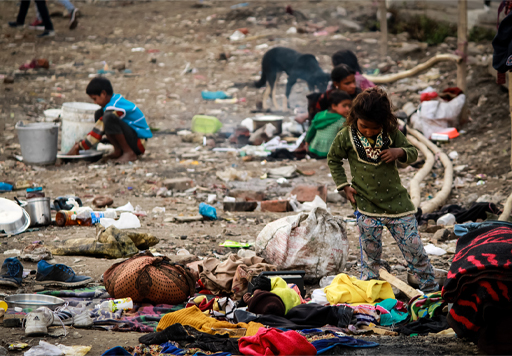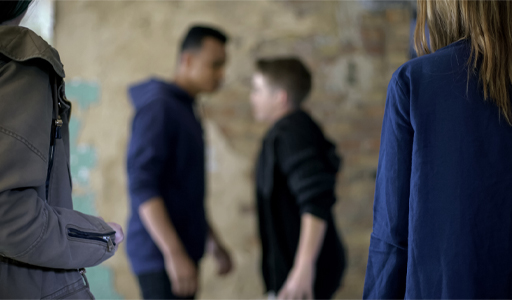2.1 Street children
Large numbers of children live on the streets of big cities and towns in countries such as India, Bangladesh and Ghana, where families are struggling to make ends meet.
Children live on the streets for a number of reasons, such as:
- poverty – when a family is unable to afford to feed a child
- becoming orphaned
- running away from home because of abuse
- beliefs such as witchcraft where children are regarded as being possessed by evil spirits, which can bring bad luck to the family, so they are thrown out of the home.
Western countries like the UK also have issues to do with homelessness. For children, this is to do with poverty and other factors which lead to them becoming temporarily homeless (or in precarious housing situations). Older children in the UK, like children overseas, also run away from home. This is an ongoing issue for lesbian, gay, bisexual and transgender (LGBT+) youth, many of whom are ‘coming out’ while at school, due to hostile home environments.
Activity 2 Rescuing children from the streets of India
The following video is 16 minutes long, but you could just watch the first five minutes for a glimpse into the reality of the lives of ‘street children’ and the challenges of offering appropriate support.
When you have finished watching the video, note down three issues that struck you as being particularly difficult for adults who might be attempting to help street children.
Video: Rescuing homeless children from the streets of India [Tip: hold Ctrl and click a link to open it in a new tab. (Hide tip)]
Discussion
Children who have been forced to leave home and then need to learn how to survive on the streets are often labelled ‘throwaway’ children, which clearly gives the impression that they are unwanted, disposable items. Such children are also present in more prosperous societies. For example, there are at least 2.5 million children who are homeless in the US each year. That figure is equivalent to 1 in 30 children in the country (American Institutes for Research, 2014).
Quite often, street children have not completely broken all their family ties. They may be sending money home and visiting, even if on an irregular basis. Clearly, the longer these children remain living on the street, the more likely they are to experience poor physical and mental health. Street children are particularly vulnerable to exploitation and danger. In addition, their mental health is at risk because of the increased likelihood of becoming involved in consuming alcohol and/or drugs from a young age. Additionally, feelings of shame, rejection, loss and homesickness can impair their mental health.
Many children do somehow manage to survive living on the street by developing various coping strategies. Many children form groups or ‘street gangs’ that might offer more protection than they would have received at home. Gangs may become family substitutes and can even be organised in terms of the roles found in a conventional family, with all members respecting the ‘rules’ and older ‘siblings’ looking after younger children.
Gangs can protect children against violence from other street children. They can also protect against police assaults and harassment, as well as the threat posed by members of the public who perceive street children as ‘delinquents’. Gang members can also look after each other when they are ill or injured, therefore fulfilling some of their needs for love, a sense of belonging and emotional support. For more information about street children, see the Dundee University StreetInvest project: the link to the research is in the ‘Further reading’ section at the end of the session.


